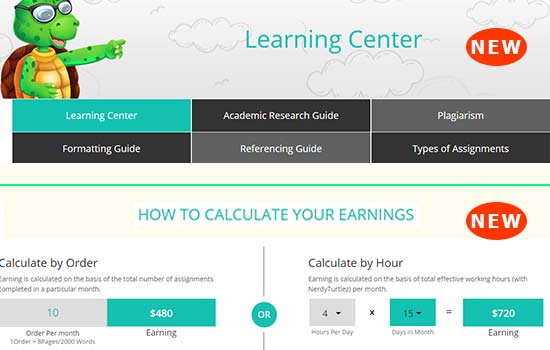How To Set Freelance Academic Writing Goals: Top 5 Steps
“Setting goals is the first step in turning the invisible into the visible”_ Tony Robbins
Everyone thinks that the weeks, right ahead of a new year are the best time for goal setting. However, you can set new goals at any time of the year. Whether you want to write 3000 words per day or try to get two new clients, you have to take some time to get on track and meet those goals. So why don’t you take some time in this week to reset you mind and set yourself for success? Remember, that setting goals and conducting regular self-reviews are good ways to see how are you doing.
“I do not have the time to set goals and review them.” Have you ever said it? So why should you spend your time setting goals and conducting self-reviews instead of writing articles and crafting pitches?
Answer: It is easy for writers to go too long without thinking about long term goals.
You can spend your precious time in cracking out $30 articles about cats, when you really should work on a $3,000 worth article about cutting-edge dental technology. So, take a step back from your immediate deadline projects. It will help you to think about your long-term objectives and where you like to see yourself in the next five years.
There are some specific strategies (steps) that can help you to attain your goals. They will also help you to revise and adapt your schedule in accordance with the demand.
1st Step: Choose The Type of Goals That You Will Like to Set
The first phase of setting a goal is to find out what categories of goals you like to set for your writing. You have to be as specific as possible. For instance, instated of setting a goal such as "writing", break your goals down into several subcategories. They are could be "non-fiction magazine writing", "writing about career development", and "writing for corporate clients."
2nd Step: Select You Goals
Now you know what type of goals are suitable for your writing habit. It’s time to come up with the goals themselves. You have to look at each category and have to decide what you like to achieve. You have to make goals for different timeframes. For instance, your monthly goals have to be different from your long-term goals. Most of the experienced writers like to set goals for three or four months. They also set a target income goal for each quarter of a year.

You need to set "SMART" goals to achieve your career objectives. "SMART" stands for specific, measurable, action/ achievable, realistic and timeline. Matching your objectives with all these criteria can help you to get what you really desire. For example, if you want to publish an article in a women's fashion magazine, then you have to set "SMART" goals for it. You need to make plan for sending 5 to 6 pitches to a particular publication house by Wednesday per week (specific, measurable, realistic and time-bound). Then you need to assign yourself a task (achievable) and note it down on your calendar to ensure that you remember.
3rd Step: Conduct a Self-Review
After setting goals, it is easy to set them aside and forget about them. You will surprise to hear that most of the writers do this exactly. The best cure for this disease is to conduct a regular self-reviews. At first, you need to understand how to perform a self-review. You should try to aim for quarterly reviews with some flexibility. However, you can use monthly or bi-annual reviews. Whatever schedule you pick, you need to ensure that you write it on your calendar and prioritize your review. If you want to analyze your performance, you have to take a few minutes and write about how you are doing about each category of goal. For instance, if you are planning to send five pitches every week, see how often you are actually doing it.
The point is not that, you are not meeting the target. You should use this knowledge to adapt your goals in accordance with the requirements.
4th Step: Make a Client Review
While you are doing self-review, it is also beneficial to make a client review. You should look at the client inventory to see which relationship you like to develop further. This review is for you only. So feel free to be ruthlessly honest. At first, you need to make a list of all the customers you have worked with in the past week, month and year. If your clientele changes from month to month, then it might become helpful for you to evaluate your clients over a larger period. You have to find answers for certain questions. They are mentioned below:
- Did you like to work with your customers?
- Did your clients pay you on time and in full?
- Were there projects exciting?
You need to identify clients you are most excited about establishing and continuing your relationship with. As a writer, you need to remember that your "top customers" are not always your best-paying customers. Your best clients may be a new one for whom you are looking forward to cultivating your relationships. Or, they can be those people you just love to work with. In addition, you have to notice clients whom you would like to avoid in future. In order to do that, you have to make some adjustments so that you don't feel any pressure to work with them.
5th Step: Make Schedule of Your Next Self-Review and Goal Setting Session
After finishing your goal setting and self-review stage, you must have to mark your next session on your calendar. Performing a self-review every three or four months is good for a new writer. You have the full authority to adjust your timing in accordance to your needs. Just make sure that you don't forget to set a date for your work on the calendar.



-1513327886.png)



-1506579403.png)


